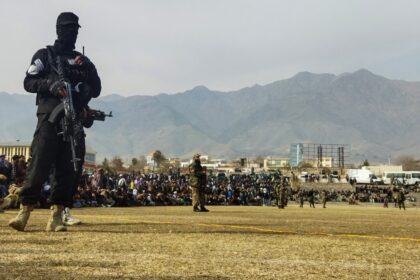RASC News Agency: The U.S. National Intelligence Agency, in its annual report released on Tuesday, has conspicuously omitted Afghanistan and the Taliban from its list of national security threats. This marks a stark departure from last year’s assessment, which extensively detailed the presence of terrorist organizations in Afghanistan. In the previous report, Afghanistan was mentioned six times, while the Taliban appeared eight times. However, the latest assessment notably excludes Afghanistan from the national security threat list, with no direct reference to the Taliban.
While this year’s report underscores the presence of Al-Qaeda leaders in Iran and its operatives in Somalia, Syria, West Africa, and other regions, it makes no mention of their activities in Afghanistan. This omission stands in contrast to repeated findings by the United Nations Security Council, which has consistently reported the continued presence of Al-Qaeda leaders and militants in Taliban-controlled Afghanistan. Last year’s intelligence assessment also warned that ISIS-Khorasan was actively orchestrating attacks against foreign targets from within Afghanistan. While the Taliban claim to have suppressed the group, ISIS-K remains operational, continuing to conduct terrorist activities across the country.
Additionally, this year’s report raises concerns over the growing capabilities of Tehrik-i-Taliban Pakistan (TTP). However, it does not acknowledge Pakistan’s repeated assertions regarding the existence of TTP safe havens within Afghanistan’s borders. A recent United Nations Security Council report has confirmed the presence of senior Al-Qaeda leaders in remote areas of Afghanistan. It further highlights Al-Qaeda’s operational footprint in Kabul and other provinces under Taliban protection. According to the UN, lower-ranking Al-Qaeda members and their families are residing in Taliban-secured districts such as Qala-e-Fathullah, Wazir Akbar Khan, and Shahr-e-Naw in Kabul.
Moreover, the UN Security Council has emphasized that ISIS-K is no longer a threat confined to Afghanistan but is actively expanding its reach into neighboring states, including Central Asia, Iran, and even Russia. This escalation signals a growing transnational terrorist threat that could jeopardize both regional and global security. Despite mounting evidence of terrorist activity in Afghanistan, the U.S. National Intelligence Agency’s latest assessment does not categorize these threats as significant to U.S. national security. This shift suggests that Afghanistan’s strategic relevance in Washington’s security calculus has markedly diminished.






